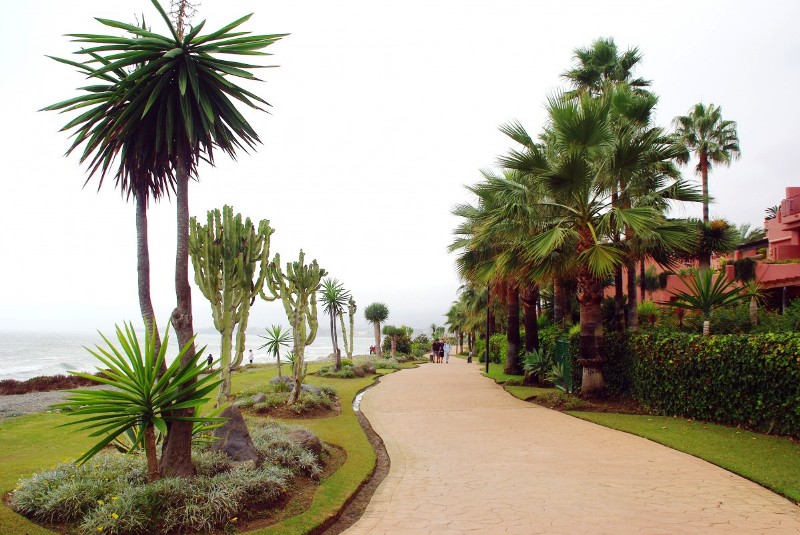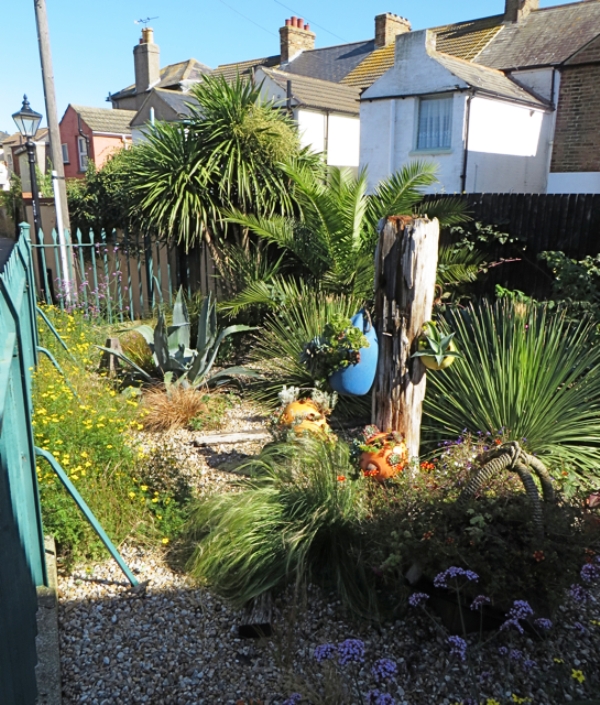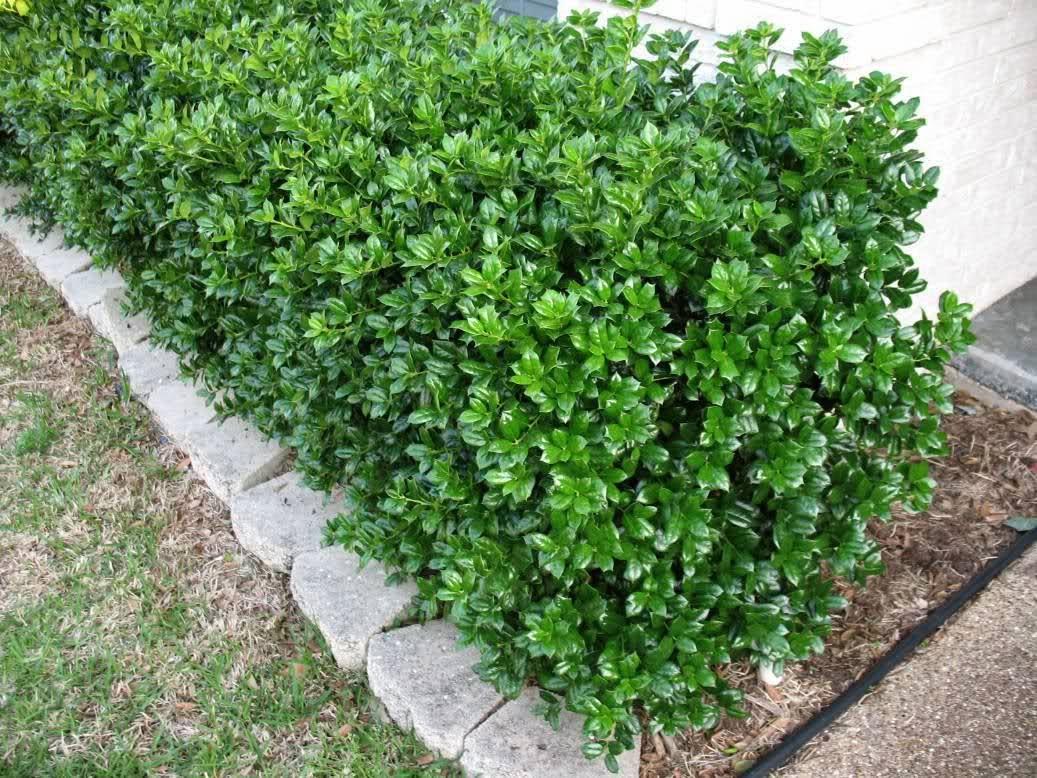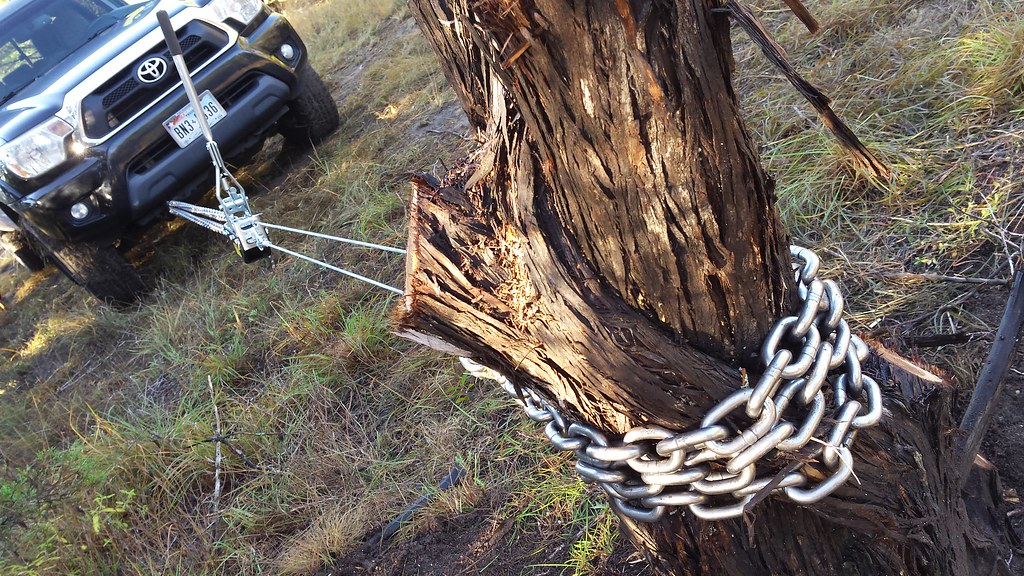Sunny, humid, swept by winds and sea spray… seaside gardens are subject to particular climatic hazards, so it is essential to choose carefully which plants to install and which to avoid.
Seaside garden: essential analysis
Before jumping headlong into the choice of plants, it is imperative to study the terrain carefully. To do this, identity:
– the orientation of the garden: a garden facing south or north will not meet the same requirements;
– the prevailing winds;
– the nature of the soil: rocky, sandy, poor, rich, etc.
Good to know: the oceanic climate has temperature variations limited to about ten degrees, and rainfall is regular. For example, the Mediterranean climate in Vancouver Island has greater thermal amplitude; temperatures can be very high, rain is rarer and more violent.
Windbreak hedge: an essential for the seaside garden
Planting a windbreak is the first action to take in a seaside garden, and this will help reduce the force of gusts and thus protect smaller plants, both in ornamental and vegetable gardens.
A plant screen
In seaside gardens, installing a windbreak hedge will allow the most sensitive plants to be protected from the gusts and the spray.
Some species can screen the wind but also direct sunlight, thanks to their dense and persistent foliage. This is the case of yew, cypress and privet.
Note: yew, cypress and boxwood are slow-growing. Choose shrubs sold in containers and therefore older so that you don’t have to wait several years before obtaining a dense and protective hedge.
A flowering hedge
Other species, flowering and lighter, lessen the effects of wind while allowing the sun’s rays to pass through, such as oleanders, tamarisks, photinia, lilacs, forsythia or Japanese charcoal.
When to plant a windbreak hedge?
Fall is the ideal season. You can also consider planting until early winter.
During the winter months, the rest of the vegetation will allow the root system to settle into the soil. The recovery will be even better when the weather is fine.
Seaside garden: which shrubs to choose from?

Colours and scents
– Broom is well adapted to the coast since it thrives in poor, even dry soil and appreciates heat and humidity. Flowering from April to June ensures colourful touches in the garden throughout the spring.
– Rosemary thrives in ordinary soil as long as it is well-drained. It loves the hot sun but is sensitive to humidity.
– The Mexican orange tree, very fragrant when it blooms in March-April, with sometimes a resumption of flowering in early autumn, can reach up to two meters in height or be grown as a ground cover. Planted in mid-shade, preferably in spring, it does not like wet soil.
– The tamarisk is a typical coastal shrub, and its pale pink flower clusters sway in the wind, creating a very characteristic undulation. The tamarisk thrives in dry, light soil but requires regular watering when it is planted to root correctly.
Note: to limit the wind load, avoid planting fragile plants in isolation. I prefer clumps and tight plantings so that the different plants will protect each other.
Plants for mid-shade and full sun
– Heather plants (hydrangeas, camellias and rhododendrons) thrive in rich, amended soil.
– The gypsophila likes to be planted in a bed and appreciates the sunshine, favouring its summer bloom. Very covering, the gypsophila quickly colonizes the space if we do not limit its propagation.
– Lavender is the Mediterranean plant par excellence, but it grows all along the coast in light soil, amended with a handful of sand when planting. It fears humidity and excessive watering, and its summer flowering pleasantly perfumes the gardens and attracts many pollinating insects.
– The mimosa is ideal by the sea, where it appreciates sandy soil and maximum sunlight. Stagnant water is harmful to it, so the soil should be well-drained at its foot.
– The grasses offer an exceptionally vast chromatic palette. Green, purple, orange, pink… these tall, airy, bushy grasses are resistant to the cold and appreciate dry soil and bright sunlight.

– Asters are to be planted (or sown) in the sun or the half-shade. They appreciate fresh soil, amended with humus or organic matter.
The maritime cineraria is a complete sun plant whose intense yellow blossom lights up the summer. Its gray, slightly fluffy leaves are deciduous and look best in coastal garden beds.
– The bellflower is an evergreen that does not shed its foliage when the flowering ends. It can be grown in the ground, mainly in a bed or rock garden, in pots or window boxes.
– Agapanthus, native to South Africa, brings an exotic touch to the garden. It appreciates strong sunlight and dry soil.
Note: the agapanthus foliage is evergreen and can reach a meter if the location is suitable. It is therefore important not to install it near lower species that it could shade.
Depending on the needs of the plants selected for the seaside garden, enriching the soil with organic matter and compost may be helpful.
Indeed, heather plants that appreciate the proximity of the coastline (hydrangeas, rhododendrons, camellias, etc.) must be enriched with heather soil at the time of planting.
Some climbers in a seaside garden
Summer blooms
– Wisteria, fragrant and romantic, climbs on the slightest support as long as the sun floods it with light and summer heat. It is wise to water the first year of planting and then find the resources it needs to flourish. In the fall, prune the branches to prevent them from becoming too invasive.
– The clematis, native to Asia, clings to any support to reach impressive heights. It thrives in full sun, with its roots in pots or the ground. Pruning is done after flowering in spring for some species, in autumn for others.
– The big one now enjoys all climates, in its most rustic version. But the oceanic environment is, all the same, its favourite because of the maximum sunning on its ramifications. It is best planted to the south or south-west, along a wall that gives it warmth and support. However, the big one appreciates excellent soil. A mulch of linen or the protection of the foot by some crushed stones will preserve a little freshness at the base.
– The hollyhock blooms in the heart of summer, raising its colourful stems into the sky. It appreciates sunny or slightly shady situations and prefers dry soil.
– The sunflower is, as its name indicates, the queen flower of sunny gardens. You should therefore choose its location with care, and stagnant water should be avoided.
Seaside garden: fight against sand
It is not uncommon for seaside gardens to be nibbled away, year after year, by the advancing coastline. To prevent the advance of sand, several plants are particularly effective:
– The Beachgrass is used on the coast in many regions to stabilize the dunes and stop the progression of sand thanks to its deep roots.
– Sand bindweed – or dune bindweed – quickly colonizes sandy slopes and areas.
Good to know: the purpose of fall and spring maintenance pruning is often to eliminate deadwood to bring light into the heart of the shrub and encourage sap flow. However, in gardens exposed to strong wind gusts, it is preferable to leave the old branches in place as late as possible, as they protect the young shoots.



